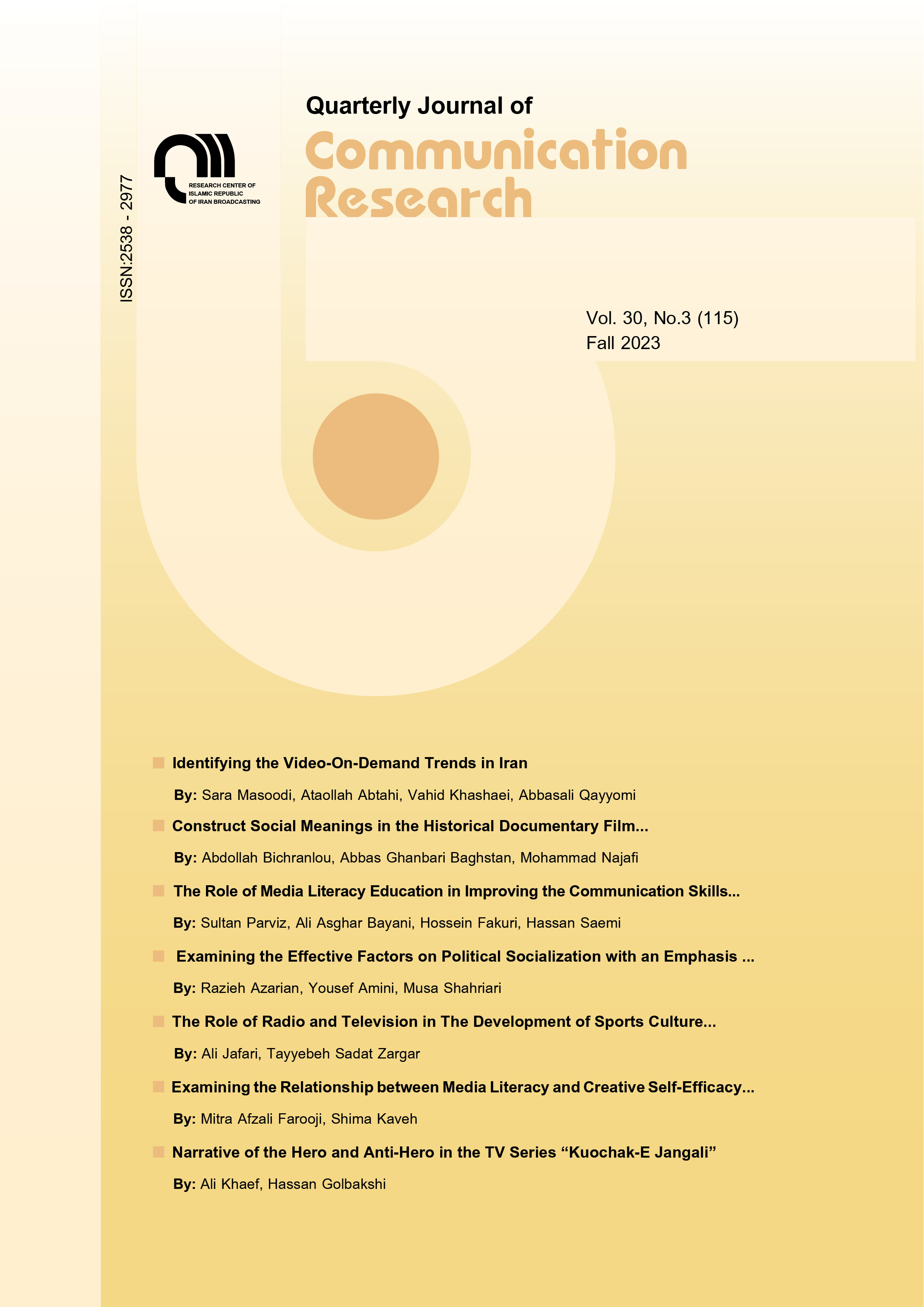Document Type : Original Article
Authors
1 Assistant Prof. Institute for Educational Studies, Organization for Educational Research and Planning (OERP), Tehran, Iran
2 Assistant Prof. In Sports Management, South Tehran Branch, Islamic Azad University, Tehran, Iran
Abstract
Sports is not only an individual activity and helps physical health, but it is also a kind of social phenomenon that affects different aspects of people’s lives. Pandemy of corona virus has led to serious changes in many aspects of people’s lives. The main goal of this research is to examine the role of radio and television in the development of sports culture at home in the era of Corona. The research method is applied in terms of purpose and survey in terms of implementation. The statistical population consists of all the citizens of Tehran. The sample size was estimated using the Cochran formula of 384 people who were selected using the multi-stage cluster sampling method. The research tool was a researcher-made questionnaire and the collected data were analyzed using the statistical tests. The findings show that radio and television plays a role in the field of education and creating the necessary cultural platforms for sports at home and then creating excitement and appreciation. The results of the research hypothesis test also show that in the development of sports culture at home, radio and television plays an effective role according to gender, health level, residential area, weekly free time and financial status, but according to the level of education, occupation, age, daily free time, Customs, number of family members and marital status do not play an effective role.
Keywords

